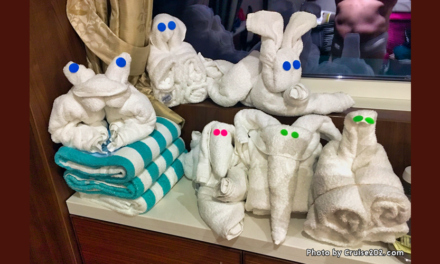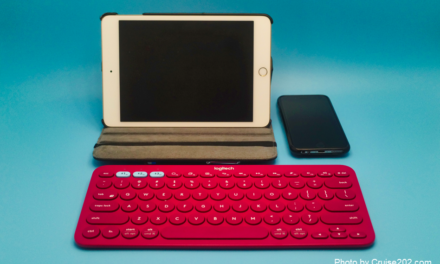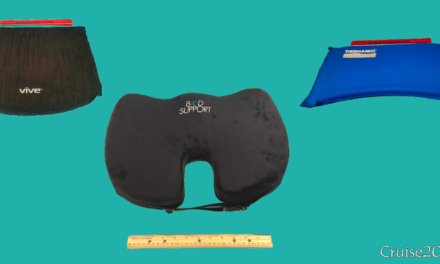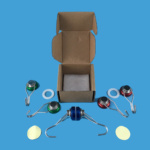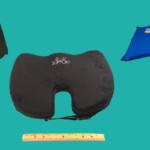Since cruising is popular with older adults, I suspect many are diabetic, as am I. As a diabetic, it is important to understand your body’s reaction to changes in schedule, new foods, weather conditions, and exercise patterns. I believe it is up to each individual to know their own body. In speaking with diabetics, I have found that no two seem to be on the same reaction to similar situations.

Some questions to ask yourself:
- Do you have a rigid schedule that, if varied, impact how you feel?
- What happens if you miss your medication or take it later (or earlier) than normal?
- How do different foods impact your glucose levels?
- Do you take regular glucose readings? If not, how do you determine when you need to take a reading?
I have not found two diabetics who have the same medications and behavior patterns. Some recommendations I have developed for diabetics are:
Know Your Body
Be aware of the changes when glucose goes too low or too high. Most diabetics can tell when their glucose is too high or too low. Pay attention to those warning signs, such as dizziness, inability to concentrate, sweats, and shakiness. This is especially true for times when food will not be nearby, such as excursions.
Take more glucose readings. Do not rely solely on physical triggers. Take meter readings more frequently than you would normally. This is good advice any time a diabetic changes daily patterns. Not only will you be affected by any time zone differences, but the food on the ship tends to be rich, unless you are very careful of what you eat and drink.
Adjust your medication schedule slowly. This is especially important if you war cruising many time zones away from your home. If you are going to Australia, do not shift your medications 12 hours overnight. Be prepared for some indications that your glucose levels are off during the first few days.

Establish Healthy Eating Patterns
Take your blood glucose readings. Cruises are a significant change to your routine, especially if you are on one with a large time change. Your body may react in unpredictable patterns. I take glucose readings more frequently on a cruise until I am sure I am under control. There is nothing worse than a hypoglycemic attack in the middle of an excursion.
Wear a medical bracelet and/or carry a medical ID card. Should something happen and you are not with someone who knows your medical condition, this will enable the medical team to assess the situation quickly. I wear a medical ID bracelet like the one in the photo that identifies me as a diabetic who has had cardiac bypass surgery. It also references the medical card that I created and laminated to carry in my wallet. This card identifies more details for my conditions, including contacts and medications. I do not recommend using the USB sticks that some medical ID sources recommend since persons responding to the emergency may not have access to a device that can read the information.
Minimize time at the buffet and keep track of the items you are eating. I recommend getting small plates and returning to the buffet if you need more. Obviously, avoid the starches and other foods that you know what foods impact your glucose levels. There will be many foods at the buffet which will be tempting. Try to assess the impact of each item on your diabetes.
Don’t be fooled by “no sugar added” or “healthy” alternatives. As every diabetic knows, foods that are good for normal persons are not necessarily good for diabetics. Our concern is not for the fat level, but the carbs in general. No sugar added items may have a much higher carb content than their sugar counterpart. I will often skip the dessert if there is not something I like. However, I am a chocoholic, so the Princess chocolate masterpieces are not something I can pass up.
Establish meal times consistent with your body’s needs. I find that I like the early dinner setting as my glucose will dive if I wait too long for dinner. I also need to have lunch by noon and a small mid-afternoon snack. I find that the fixed dinner times work best for me, especially if there is a large time change. My body adjusts better and I like the company of others whom I get to know better during the course of the trip. Plus, having the same waiters enables them to better recommend foods for me.
Limit the alcohol. Alcohol increases glucose levels and can significantly impact your reactions. Cruise lines like to push the alcohol. Even when I receive the drink package, I limit my alcoholic and sweet drinks.
Don’t be afraid to ask for modifications to dinners. I find that certain sauces and sides react adversely with me. Every cruise has been willing to modify a plate for me. I do not request diabetic meals, because I like to check out the regular menu. But I do ask for concessions based on what I know about myself. And… I do have deserts.
Keep snacks close. When I am traveling, I have a messenger bag that I carry with me. Yes, I have been told it is a “man purse”, but I really don’t care. In it, I have my glucose meter, a small tube of glucose tables, any pills I may need to take, and snacks in case my glucose levels drop, which happens more frequently than I would like. It is also useful for carrying other essentials, such as my iPad, pen, paper, and business cards.
Adjust to Time Zone Changes
Understand that your body does not read a clock. You may feel hypoglycemic in the middle of the day on a cruise as a result of changes to your clock. Be aware of this possibility.
Always carry snack to combat hypoglycemia. I travel with glucose tablets, snack bars, and other candy that I can take should my glucose levels drop while we are out on an excursion or in a location where food is not readily available. In my case, I would rather have a high glucose level than a low level. I can normally feel when my glucose falls below 80 and immediately have something to bring it up (e.g., M&Ms don’t melt, glucose tablets are easy to carry). There is nothing worse than being on a great excursion and experiencing a bout of hypoglycemia, which in my case causes me to lose my focus and balance.
Carry a glucose meter with you. I travel with two small glucose meters (Bayer Contour Next One). They are small and easy to pack when traveling. I tend to take a lot of reading the first few days of a cruise to ensure that I am not negatively reacting to the time changes. I speak with many diabetics who do not take their glucose readings and truly cannot understand how they can manage their diabetes without this information.
Take your medications on time. It is easy to get involved in the excitement of the cruise and forget to take you medications. It is important that you take your medications at the prescribed times. As you change time zones, this may impact you, so be attentive to changes.
Please let me know if you have any tips you would like to pass along to help your fellow diabetics.




